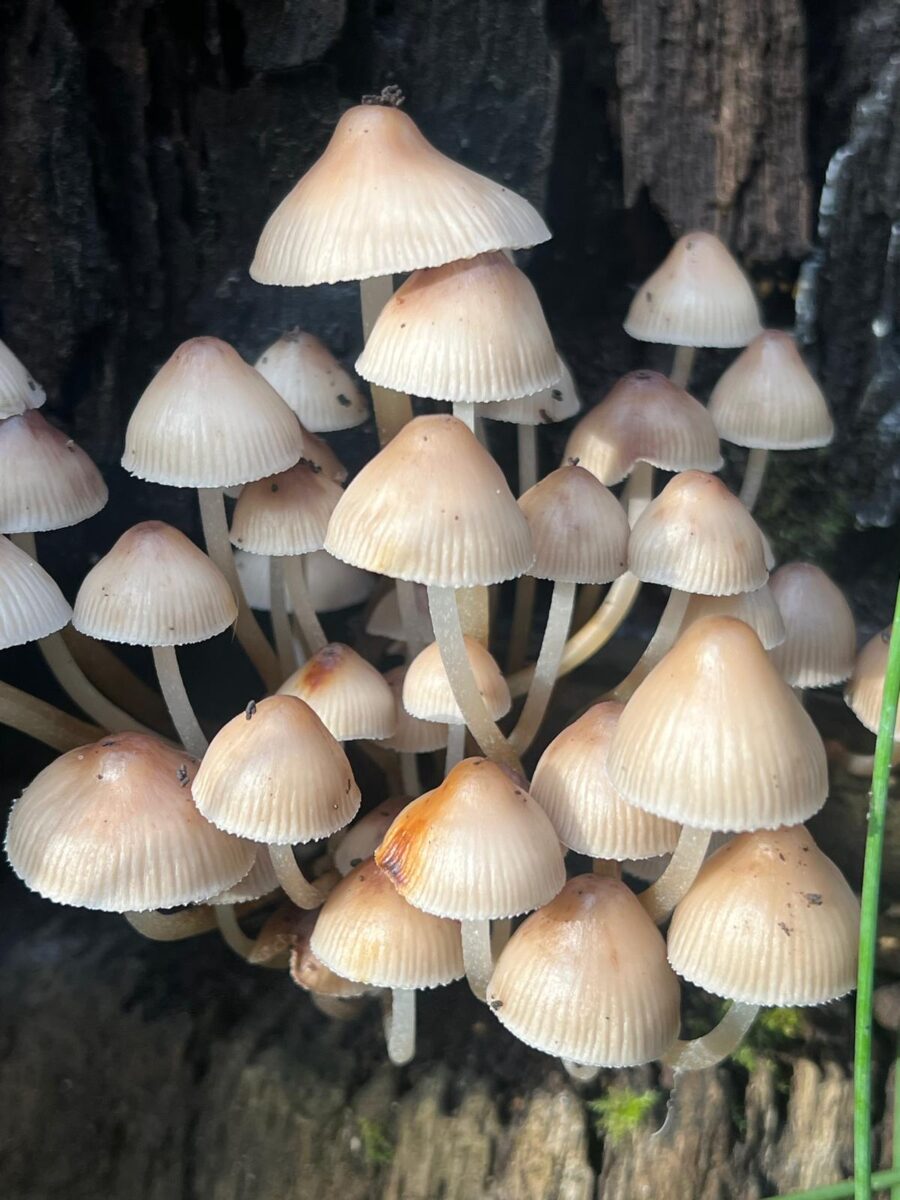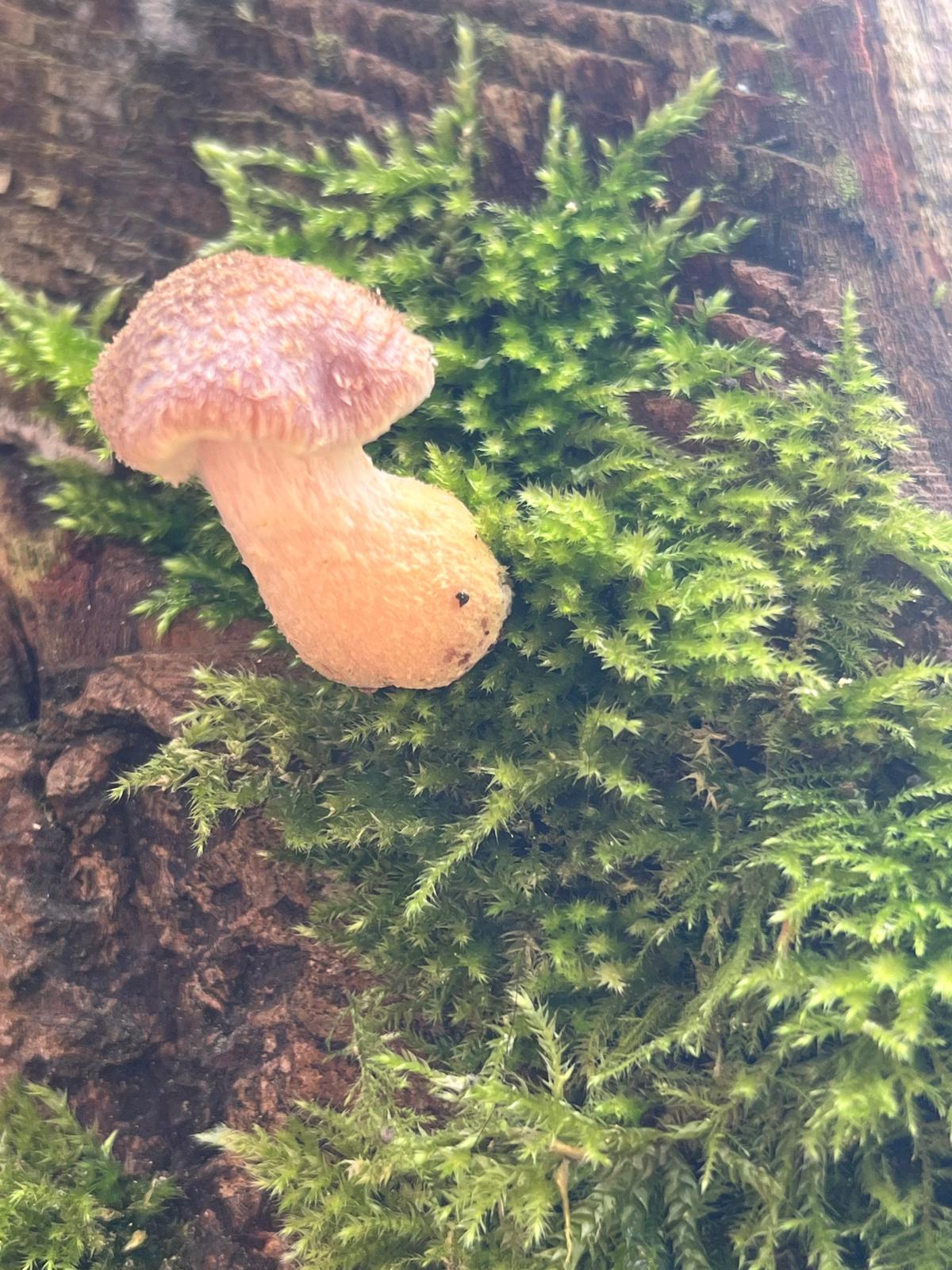Finding and Identifying Fungi at Watatunga Wildlife Reserve
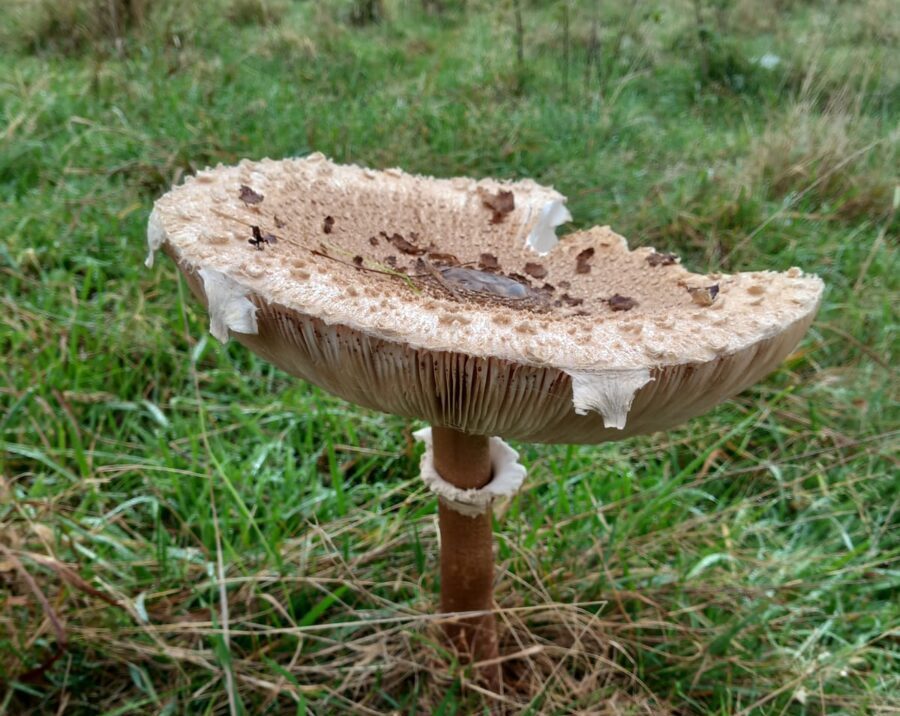
A Day on the Reserve with Miranda and Gareth
On November 2nd, Miranda, our Education and Conservation Officer, joined forces with Gareth, a local mycology enthusiast, for an exciting fungal survey at our reserve. This educational adventure revealed not only some fascinating fungal species but also highlighted the remarkable diversity of fungi within Watatunga.
Understanding Fungi: More Than Meets the Eye
Before heading out into the reserve, Gareth kicked off the day with a lesson on fungal anatomy. He explained that the part of the fungus we see above the ground is the “fruiting body,” which plays a crucial role in reproduction by producing spores. These spores spread, helping fungi disperse and colonize new areas. But what we don’t often see is the mycelium – the root-like network that exists beneath the soil’s surface. This vast underground network sometimes covers extremely large areas in search of nutrients. A single kilogram of soil can contain 200 kilometres or more of mycelium!
Gareth also emphasised the importance of learning the correct terminology when identifying fungi. The colour of the gills, the texture of the stem, and other distinct features can all provide valuable clues in identification. It’s not just about what the fungi look like; it’s about knowing what to look for.
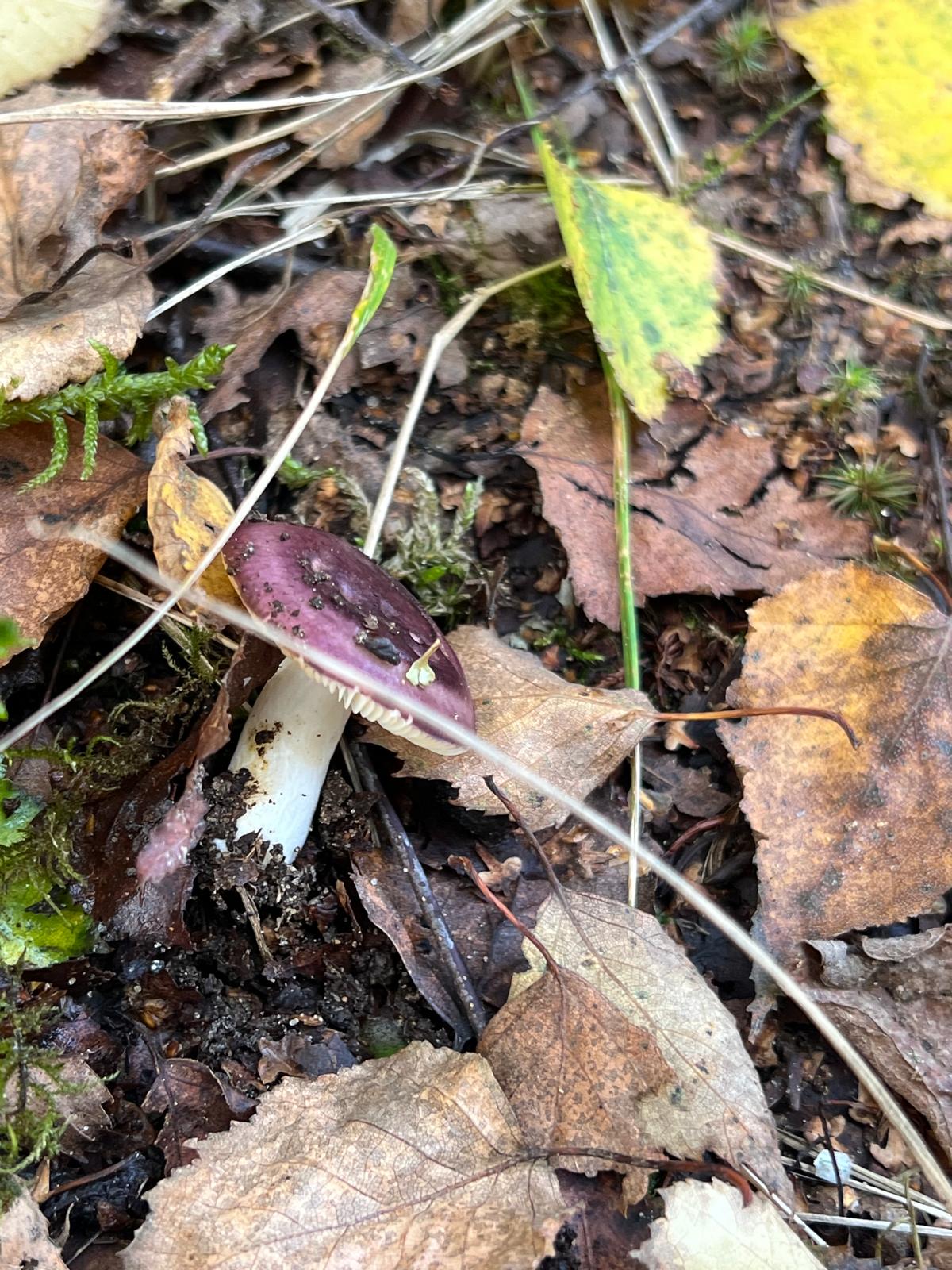
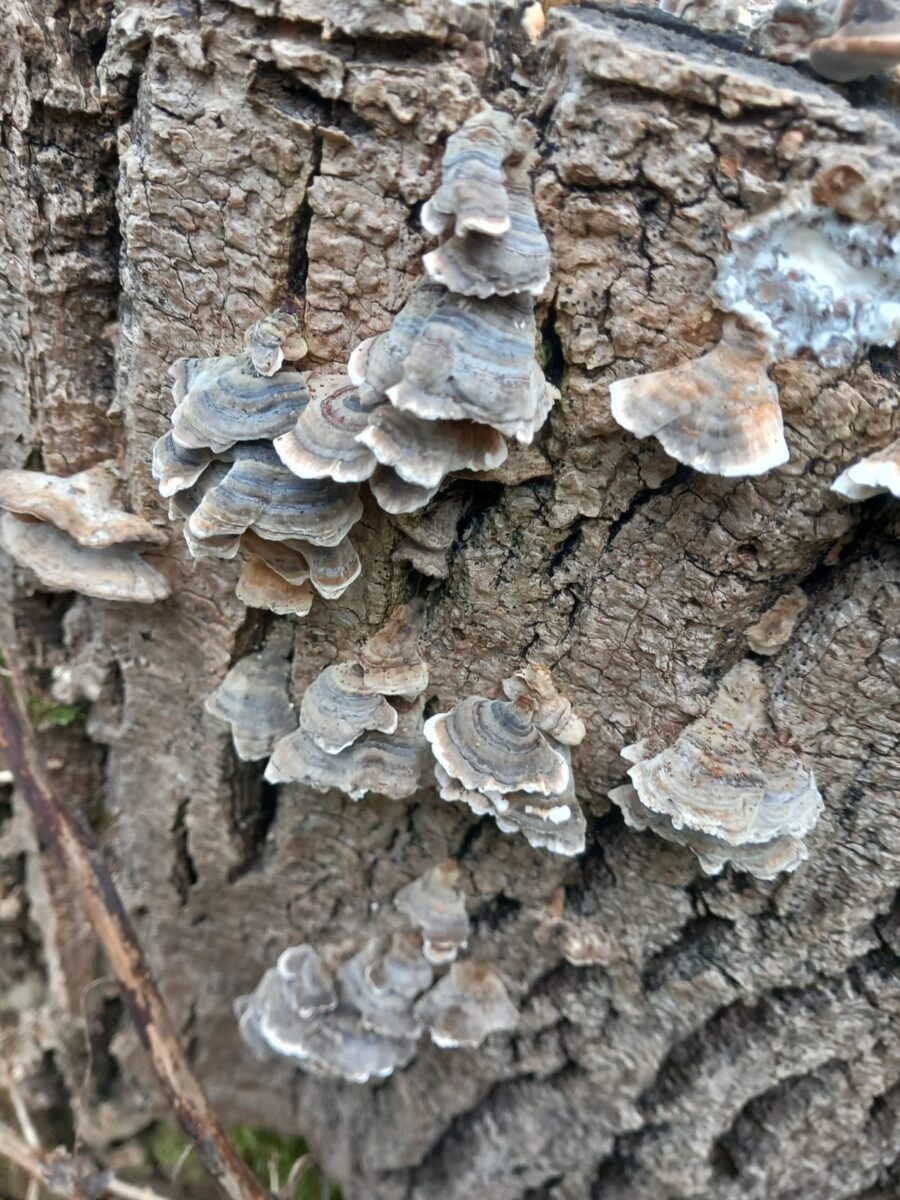
A Journey Through the Reserve
Armed with new knowledge, Miranda and Gareth set out on a buggy to see what they could discover. Different species of fungi thrive in various environments, so their journey took them across various habitats found within the reserve.
First, they ventured into the ancient woodland, where they checked dead logs and leaf litter- perfect spots for fungi to grow. Here, they discovered a variety of species, including the huge Macrolepiota procera, the bizarre Jelly Ear, and the stunning Turkey Tail fungi, all of which play important roles in breaking down organic matter and contributing to the health of the ecosystem.
Next, they made their way to the grassland area, where a sea of yellow field mushrooms greeted them. These prolific mushrooms are a common sight in open, grassy areas, adding another layer of biodiversity to the reserve.
Not stopping there, they ventured into our Forest School area, where they found a very colourful species: the Stropharia caerulea, also known as the Blue Roundhead. This vibrant blue fungus is non-toxic and quite common in areas of Europe and North America. The fungus provides an excellent opportunity for the kids to learn about the wonderful world of fungi, including why they are not consumable.
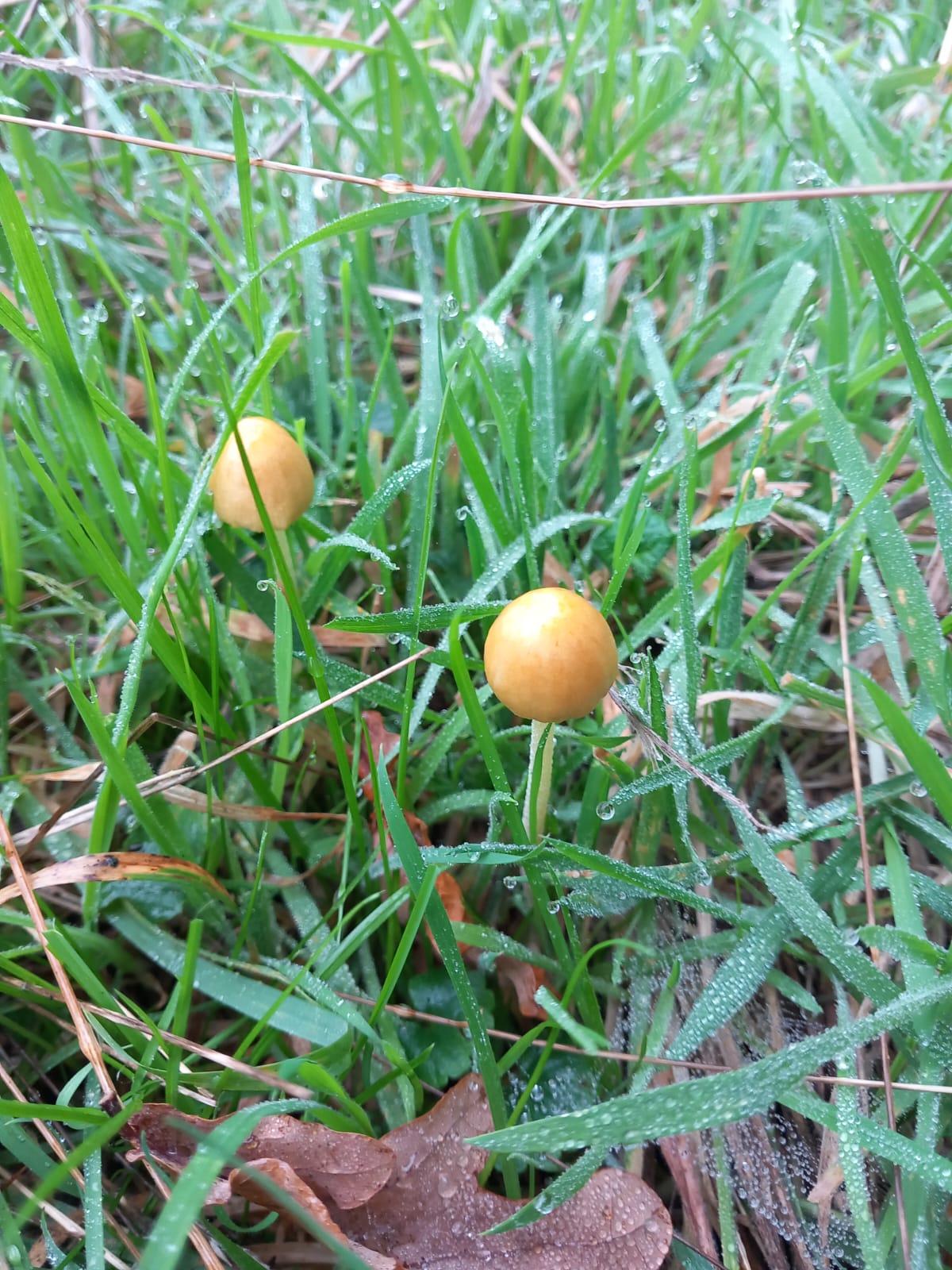
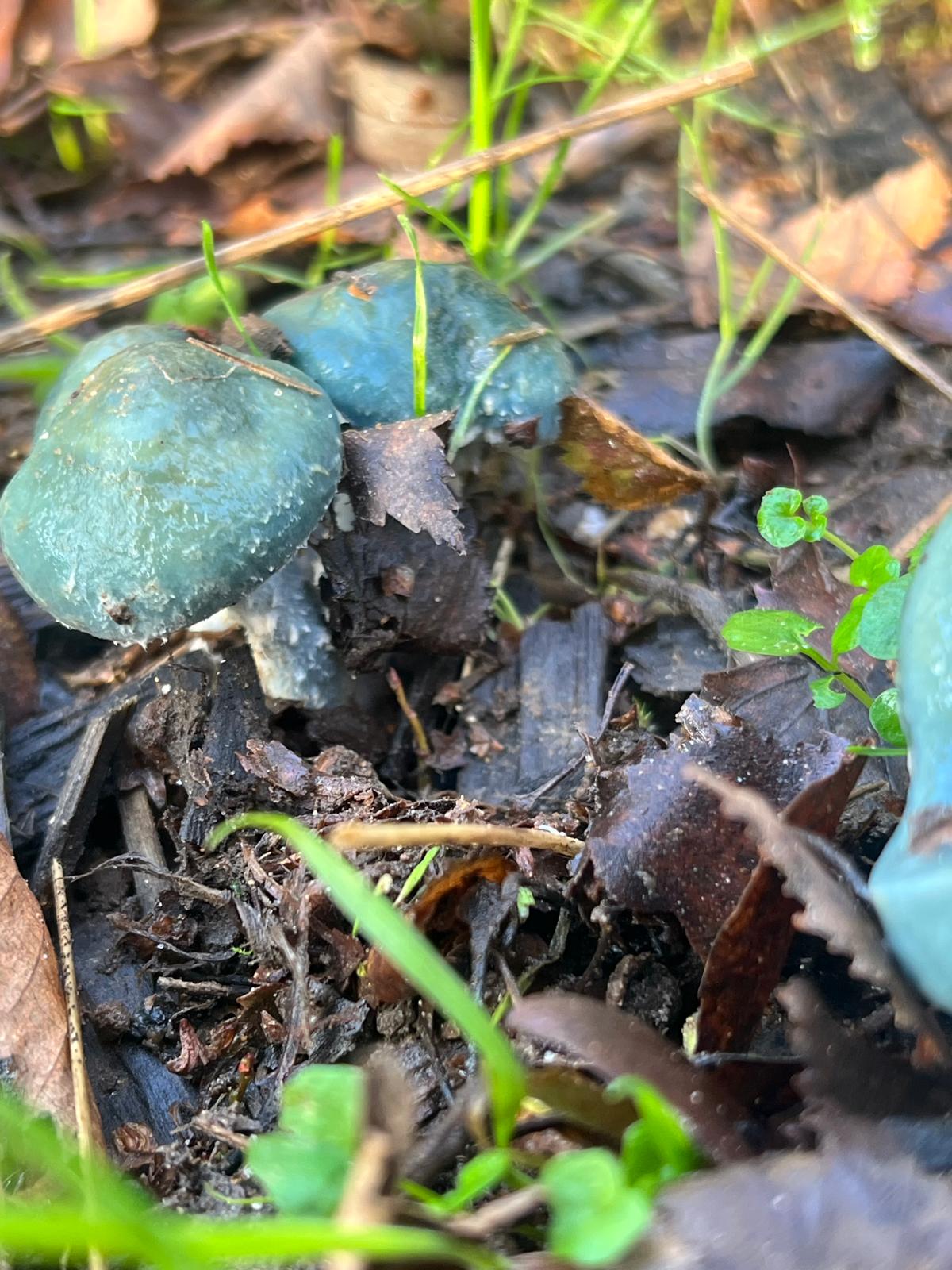
Fascinating Fungi Finds and a Special Discovery
Throughout their survey, Miranda and Gareth found a total of 33 different species of fungi, each with its own unique characteristics and ecological role. Among the species they discovered were two that are slightly toxic: Sulfur Tuft and Spectacular Rustgill. However, these fungi are not dangerous to animals at the levels found in the reserve, which was another useful discovery.
The true find of the day came from Sheena, one of the Volunteers at Watatunga. During our Bioblitz week, Sheena recorded a rare and exciting species on iNaturalist– the Wrinkled Peach mushroom. This fascinating species likes to grow on dead and rotting Elm trees, and it was once quite common. Unfortunately, after the devastating Dutch Elm Disease outbreak, Wrinkled Peaches have become a much rarer sight. Finding one on the reserve was a thrilling moment for both Gareth and Miranda, highlighting the importance of preserving our ancient woodlands.
The Importance of Fungi in Conservation
This survey was a reminder of how much there is to discover in the natural world. Fungi, often overlooked, play an essential role in the environment. They break down organic matter, recycle nutrients back into the soil, and support biodiversity. Understanding their roles and identifying different species helps us to create a picture of the biodiversity within the reserve.
As we continue our conservation efforts, it’s essential to protect habitats that support such incredible organisms. We look forward to more discoveries like this and are excited to share what we find. Read more about our conservation efforts on our Conservation page here.
